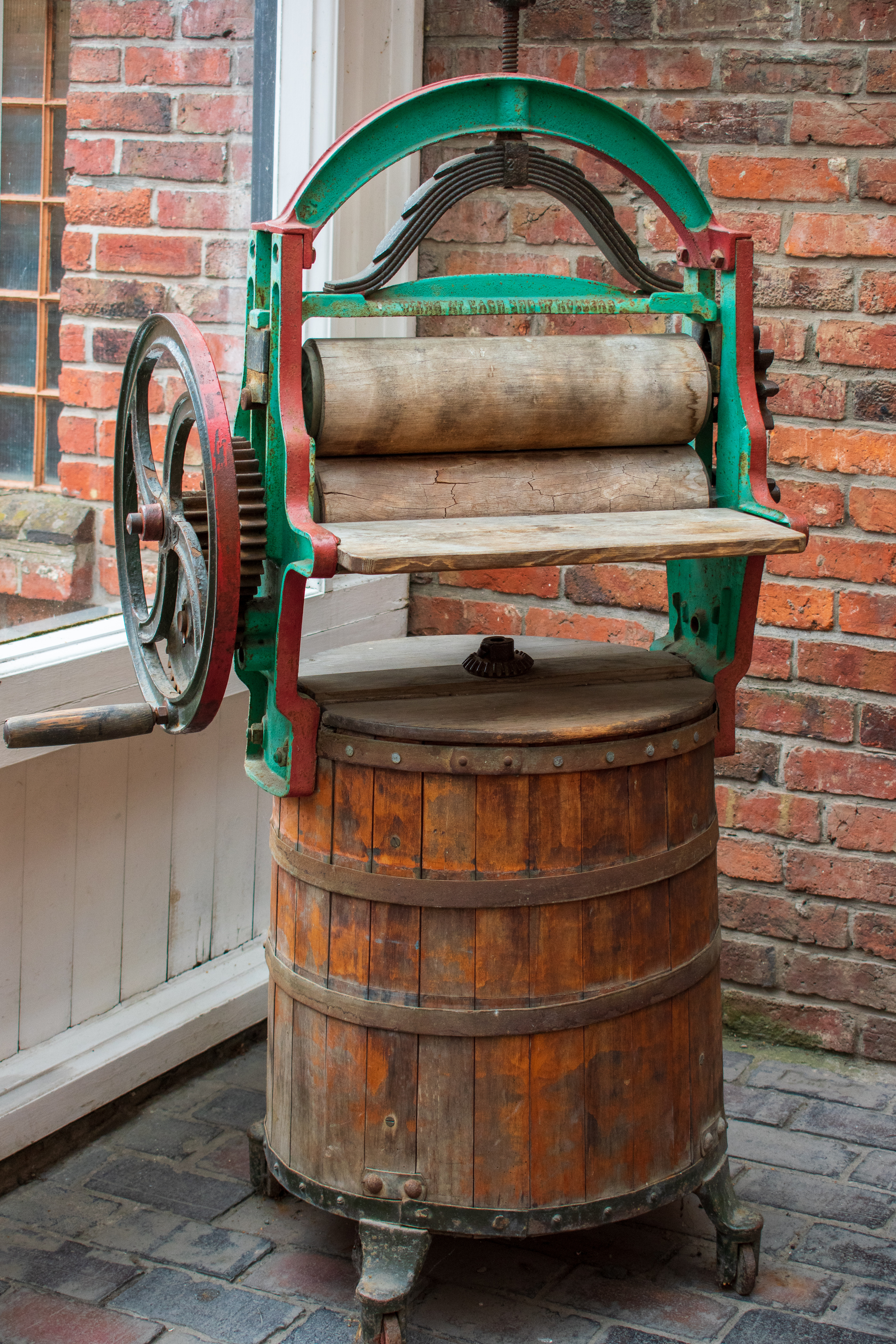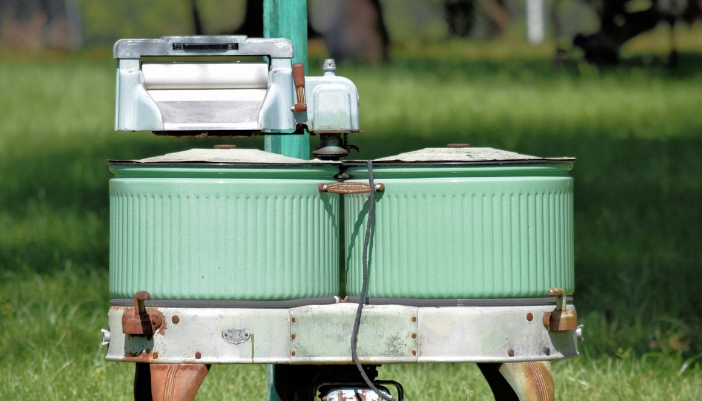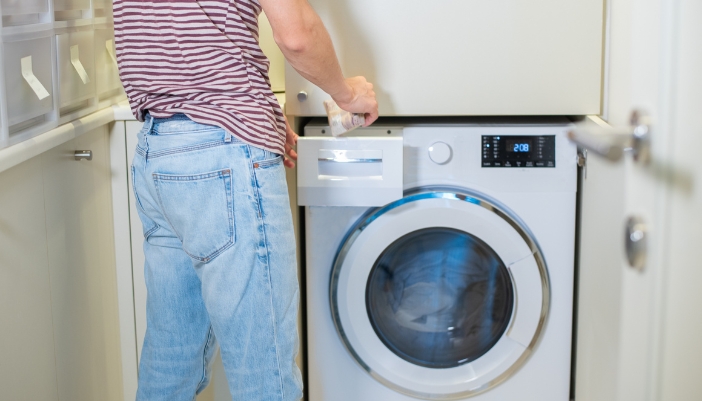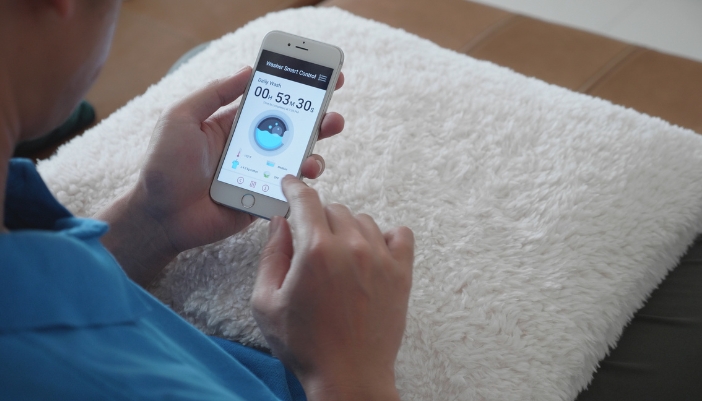Dreading doing the laundry? Sure, you might have a giant pile of clothes that never seems to dwindle, but at least washing it is simple. Just load and hit start!
Can you imagine having to hand-scrub every piece of clothing by hand on a washboard? Or needing to crank a handle to get the machine to agitate? Talk about laundry day taking forever!
Luckily, we have made great strides in laundry technology. And in honor of National Laundry Day coming around the corner (on Apr. 15th), let's explore how far washers and dryers have become the reliable machines every household needs!
The Dawn of Washing Machines

Long before we had the luxury of loading a machine and pressing a button, laundry day was a real workout. Before machines, there was just beating laundry with a rock (or a stick!) by a stream. But then the first laundry innovation happened, and it was all uphill from there!
- 1830s, the Washboard Era: Marking the first laundry "innovation," the washboard became a staple in households for scrubbing clothes. Its ribbed surface made it easier to remove dirt by providing friction, a considerable improvement over earlier methods.
- 1851, James King's Breakthrough: King introduced a hand-powered washing machine with a drum design. Unlike the washboard, this machine allowed clothes to be placed inside a drum, where they could be agitated by turning a crank, streamlining the washing process.
- Late 1800s, The Advent of Rotary Machines: Building on mechanical agitation, rotary washing machines emerged with a drum that could be rotated by a hand crank, which was more efficient and provided a better clean!
Electrifying the Laundry Process

The early 20th century brought electricity into the home, and a new wave of innovation dramatically changed laundry day: electric laundry machines! These turned laundry from an all-day affair into a task that could be completed in a few hours, just like today's laundry appliances!
- 1908, The Thor Washing Machine: Marking a pivotal moment in laundry history, the Thor, created by Alva J. Fisher, became the first electric-powered washing machine. This invention liberated households from the manual labor of hand cranks and washboards, making laundry significantly more accessible and less time-consuming.
- Early Electric Washing Machines: Following the Thor, the 1920s and 1930s refined the first electric washer with electric motors and timers to significantly reduce physical labor!
- The Electric Dryer Emerges: The first electric clothes dryer was patented by J. Ross Moore in the 1930s, which introduced a heated drum where clothes could be tumbled and dried using electric power!
Did You Know?
George T. Sampson patented the first automatic clothes dryer in 1892, which utilized a rack and a system of pulleys to hang clothes over a heat source, like a stove or furnace, to dry them.
Automatic Laundry Revolution

Once laundry appliances went electric, it was only a matter of time before they became automatic. Not only did this process make laundry day even less labor intensive, but it made it more efficient, too!
- First Fully Automatic Washer (1937): The Bendix Home Laundry was a groundbreaking introduction, automating the washing process. This machine automatically filled the clothes with water, agitated them, rinsed them, and then spun them dry, all without any manual intervention.
- Automatic Tumble Dryers (1940s): Soon after the automatic washer became popular, the automatic dryer followed. These dryers used a heated air stream to dry clothes in a rotating drum, eliminating the need to line-dry clothes.
- Moisture Sensors (1980s): A significant innovation in dryers, early moisture sensors measured the air to prevent over-drying, but they weren’t precise.
Note:
During this time, laundry machines included simple timers and settings that allowed users more flexibility!
Efficiency First

Automating the laundry process was a huge and necessary step for laundry innovation. Sure, it could have stopped there, but luckily it didn’t. With a mind towards sustainability and lower energy bills, laundry appliances took a significant turn!
- 1990s High-Efficiency Washers: The 1990s introduced high-efficiency (HE) washers, which utilized up to 50 percent less water than traditional models and became popular for their conservation efforts and lower operating costs.
- 2000s and Moisture-Sensing Dryers: By the early 2000s, dryers had more sophisticated moisture sensors that made real-time adjustments to the drying cycle according to the moisture sensed using conductivity measurements.
Smart Laundry Evolution

Even with new efficiency tech, there’s always room for improvement. And around the early 2010s, smart washers and dryers came on the scene! The first smart washers let users control and monitor their laundry remotely, making laundry day even simpler! Now, you don’t have to worry about leaving a load of laundry in the dryer too long; you’ll get a reminder on your phone instead!
And as smart technology gets increasingly innovative, the applications for smart laundry appliances continue to improve. With proactive maintenance alerts and smart home integration, it’s no wonder smart washers and dryers are the latest must-haves!
So, if you’re using an outdated laundry set or looking a little worn, don’t wait to upgrade! At Central Distributing, we carry a wide selection of laundry appliances with all the latest features and efficiency settings! And if you can’t decide, our experts are always happy to lend a hand — just call or pop in!